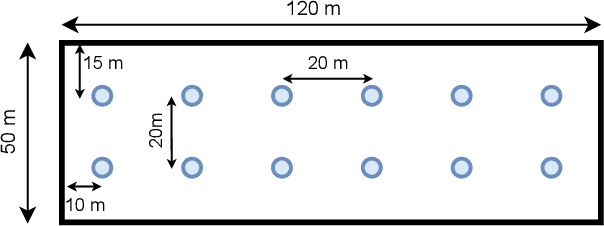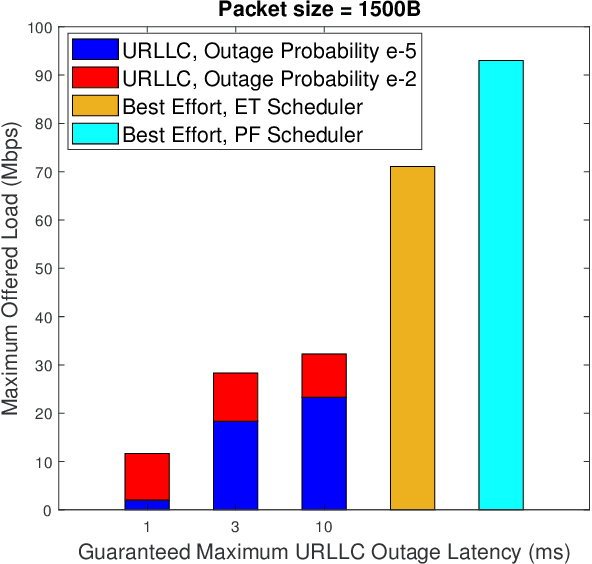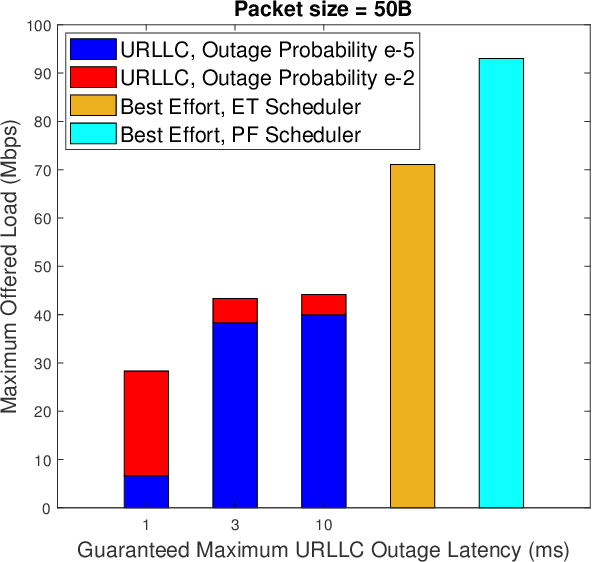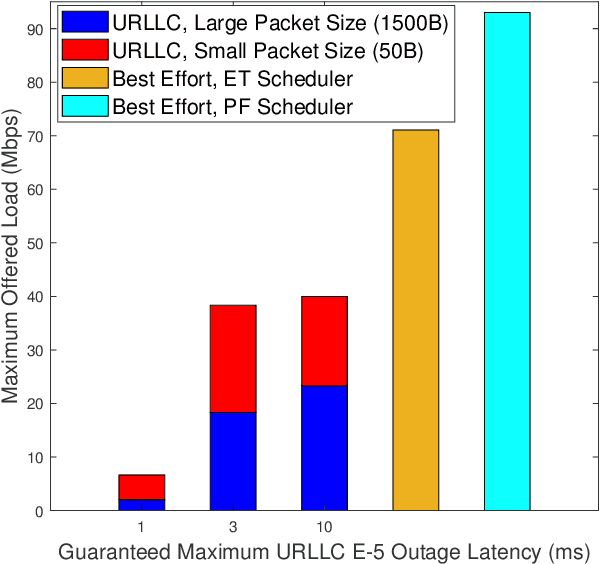Capacity Cost of Fulfilling the URLLC Performance in Industrial 5G New Radio Deployments
Paper and Code
Apr 02, 2022



The development of the 5G new radio specifications has been derived by the the deterministic low latency use cases such as the ultra-reliable and low-latency communications (URLLC). A URLLC application requires a stringent radio latency and reliability performance, e.g., one-way radio latency of 1 ms with 99.999% success probability. Furthermore, there is a concurrent progressive demand for broadband capacity cellular applications, e.g., enhanced mobile broadband (eMBB) use-cases. The coexistence among the URLLC and eMBB service classes over a single radio spectrum is a challenging task since achieving the tight URLLC radio targets typically results in a capacity loss. Hence, it is vital for telecom operators to understand the capacity cost of fulling the various URLLC requirements in order to sufficiently plan the corresponding pricing models. Hence, in this work, a comprehensive analysis of the system capacity loss is presented to achieve the various requirements of the different URLLC use-cases. An extensive set of realistic system level simulations is performed and introduced where valuable insights and system design recommendations on the URLLC-eMBB quality of service coexistence are presented.
 Add to Chrome
Add to Chrome Add to Firefox
Add to Firefox Add to Edge
Add to Edge